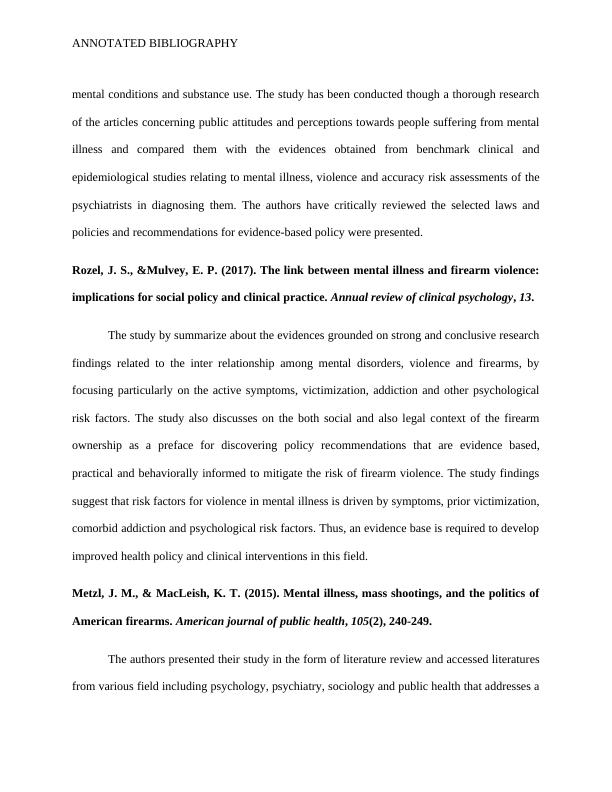Annotated Bibliography - The Cure Violence Model
Create an annotated bibliography of at least 12 scholarly or professional sources on the problem of reducing gun violence through background checks for firearms that include the individual's psychiatric health history. Provide a synopsis of each source, assess the trustworthiness and validity of the information, and evaluate the usefulness of the source in your research.
Added on 2022-08-22
Annotated Bibliography - The Cure Violence Model
Create an annotated bibliography of at least 12 scholarly or professional sources on the problem of reducing gun violence through background checks for firearms that include the individual's psychiatric health history. Provide a synopsis of each source, assess the trustworthiness and validity of the information, and evaluate the usefulness of the source in your research.
Added on 2022-08-22
End of preview
Want to access all the pages? Upload your documents or become a member.




